Contents
Early ripe radish varieties Rondar are ready for use 25-28 days after germination. A hybrid of the Dutch selection from Syngenta has been distributed throughout Our Country since 2002, the date of inclusion in the State Register. Rondar variety is sown in spring and autumn.
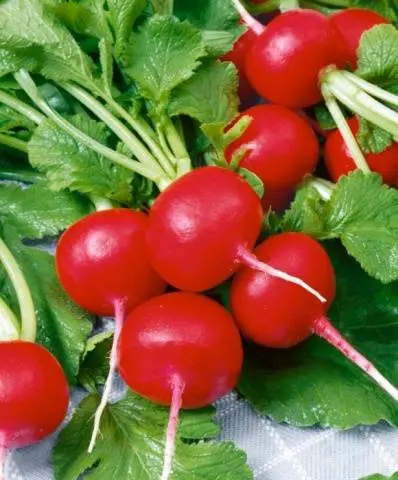
Description
The Rondar F1 hybrid has a compact, semi-upright, rather low leaf outlet. Anthocyanin coloration is noticeable on the petioles. Leaves rounded on top are slightly elongated, short, muted green. Rounded root crops with a smooth, shiny bright red skin grow up to 3 cm in diameter, weigh 15-30 g. With good care, the Rondar variety ripens amicably and pleases with uniform root crops. The juicy white pulp of the Rondar hybrid does not lose its characteristic density and elasticity for a long time. The taste is pleasant, characteristic, moderately bitter without spiciness.
From 1 sq. m beds can be collected from 1 to 3 kg of the Rondar F1 hybrid. An overgrown root crop stretches in length, becomes ovoid, voids are created in the center.
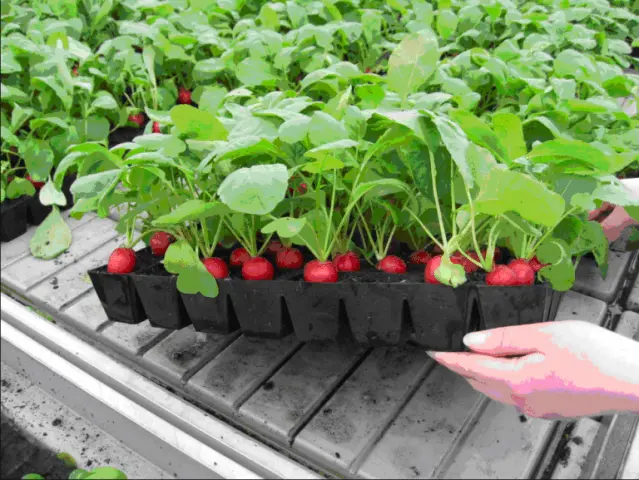
Advantages and disadvantages
Advantages | Disadvantages |
Early maturity, synchrony of maturation and high yield | Radishes do not grow well in acidic and heavy soils. |
High consumer qualities of the Rondar variety | Demanding for light |
compact plant | Demanding for abundant watering |
Resistance of the hybrid Rondar F1 to flowering, cracking of root crops and yellowing of foliage; cold resistance |
|
Preparation of seeds for sowing
For a good harvest, radish seeds are properly processed before sowing. If the seeds of the Rondar variety are from the originating company, they are usually processed. They are sown in the soil. Other seeds must be sorted out and discarded small ones.
- Seeds are soaked in water for 8-12 hours and sown;
- Put in a damp cloth and placed in a warm place for a day;
- Warm up in water at a temperature of 48-50 оC for 15 minutes. Then they are cooled and treated with growth stimulants according to the instructions, dried and sown.
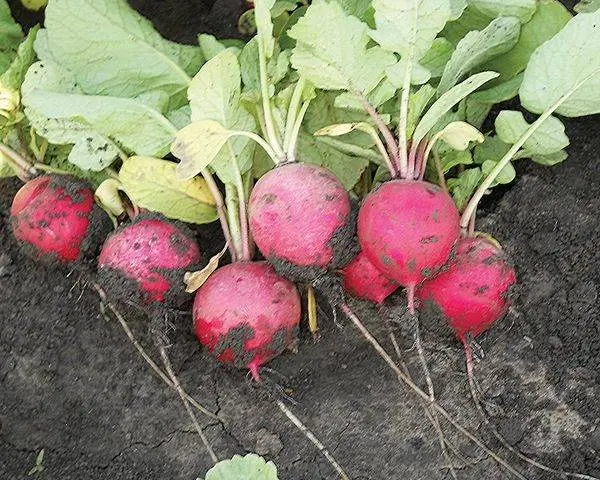
Peculiarities of growing
Hybrid Rondar is grown in open areas and in greenhouses. Plants develop well at temperatures up to 20 оC.
In open ground
For radishes, choose a sunny site or with light shading before or after lunch.
- Before processing the beds, 20 g of superphosphate and potassium sulfate are scattered on the surface, 5 g of urea or the same amount of minerals are dissolved in 10 liters of water and the soil is watered;
- In the spring, radishes are sown in April, but no later than May 10th. When the heat is above 25 оC the plant shoots;
- For autumn use, sowing is carried out from the end of July;
- Between the rows leave 8-10 cm, the seeds are placed at intervals of 3-7 cm;
- Seeding depth – up to 2 cm on light soils, 1,5 cm on heavy soils.
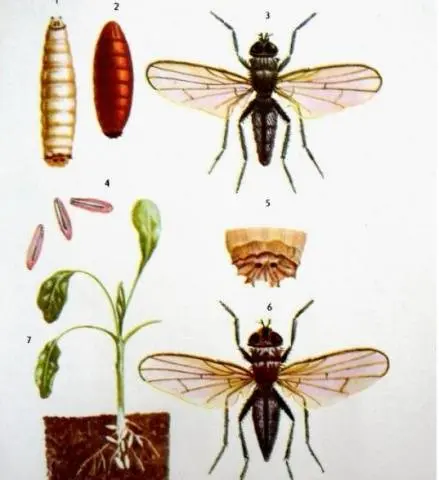
In the greenhouse
The Rondar variety, due to its rapid maturation, is suitable for growing indoors. Maintain temperatures below 18 оC. In winter, they light up a little, because the plant needs a short daylight hours – up to 12 hours. Respect the norm up to 1500 lux.
- Acidic soil is leached by adding up to 15 kg of horse manure per 1 sq. m;
- When digging the soil for 1 sq. m of soil contribute 15 g of potassium chloride or 30 g of potassium magnesia and 40 g of superphosphate;
- The rows are made at a distance of 8-10 cm, the seeds are placed after 3-5 cm to a depth of 1-2 cm;
- Radishes can be compacted with parsley or carrots;
- For greenhouses, the cassette method of growing the Rondar hybrid is justified;
- In the process of development, the hybrid variety of radish Rondar is fed and protected from diseases and pests with wood ash (100 g/m2), tobacco dust, use the drug for root crops “Zdraven-aqua”.
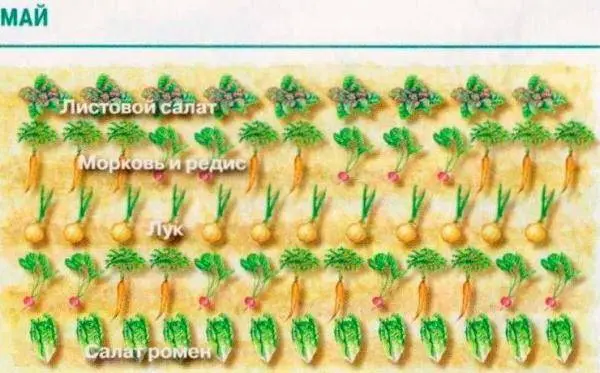
Growing problems
Possible problems | Causes |
The structure of radish fruits is fibrous, the taste is bitter | Rare, intermittent, and scarce watering, the soil has dried up. For 1 sq. m of crops need 10 liters of water daily, or 15 liters for two times watering |
The tops are developing, the root crop is not formed | Thickened landings; seeds are deeply buried; late sowing – at the end of May or in June; area shading. Sometimes when cutting tops, radish roots grow |
Root crops are hollow | An excess of organic matter, manure was laid. Nitrogen stimulates the development of green mass to the detriment of root crops. The situation is corrected by adding 100 g of wood ash per 1 sq. m or a solution of 20 g of potassium sulfate per 1 liter of water |
Root crops are cracking | Irregular watering. Radishes are poured with warm water in the evening through a watering can |
Arming | Although the Rondar hybrid is resistant to flowering, the gardener can provoke even such a plant with daily weeding or breaking through. Shooting, the radish protects itself from interference, prolonging its genus and producing seeds. |
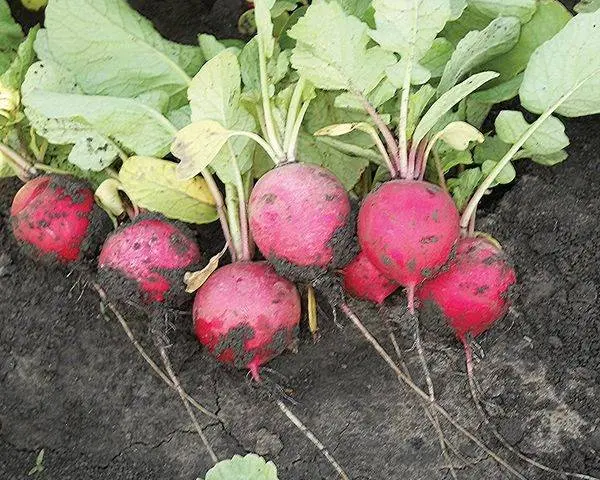
Diseases and pests
Radish Rondar is a hybrid plant that is practically not susceptible to diseases, but pests can attack crops.
Diseases/Pests | Evidence | Control measures and prevention |
In the greenhouse, radishes can be threatened by brassica powdery mildew and downy mildew. | Powdery coating below or above radish leaves. The plate is deformed, turns brown | Apply fungicides Ditan M, Ridomil Gold |
Vascular bacteriosis | On developed leaves, the veins turn black, the leaves turn yellow, crumble | The infection is transmitted by seeds that must be soaked for 15-20 minutes in hot water. |
Gray mold | Brown spots on root crops begin to rot | Sick plants are removed. Prevention – fungicides and collection of crop residues |
Cruciferous fleas | Leaves in small holes. Gradually the seedlings dry up | The soil is sprinkled with wood ash with tobacco dust after sowing and on young shoots. Dusted with ground pepper as well. Sprayed with a solution of a bottle of vinegar in 10 liters of water |
cabbage fly | The larvae damage the roots of radishes, make passages | Prophylactically in the fall, the remains of cabbage leaves are removed from the garden, the soil is deeply plowed. Do not plant radishes after cabbage or next to it |
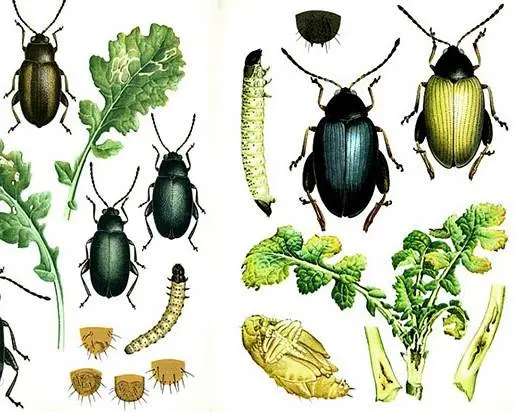

Conclusion
A high-yielding hybrid will reveal its potential if you purchase seeds from the originator’s company and water the plant regularly. Top dressing is best applied to the soil before sowing. Proper crop rotation will prevent the development of diseases.









